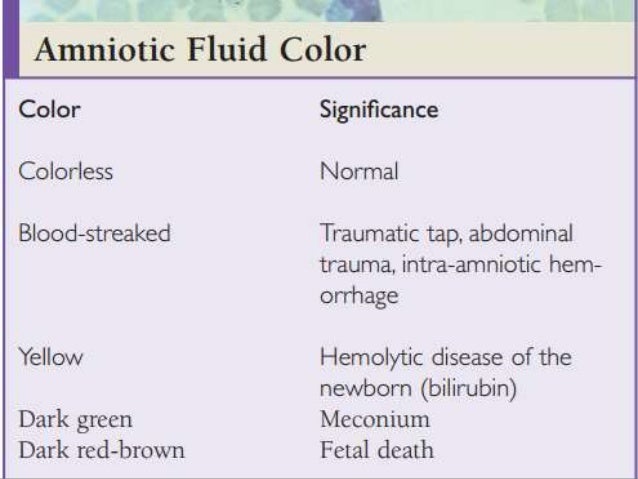
Medical staff can diagnose the aspiration of meconium by checking the amniotic fluid at birth for the presence of meconium. As an infant draws its first breaths, it may aspirate amniotic fluid tainted with meconium, and that meconium can become embedded deep within the baby’s lungs, leading to breathing difficulties and serious infections, such as pneumonia. Sometimes, however, a baby passes stool before it is born, and that stool-meconium-makes its way into the amniotic fluid. Meconium, a black, tarry substance, is a baby’s first stool, usually passed shortly after birth. Amniotic fluid aspiration is also called meconium aspiration. While all cases of amniotic fluid aspiration pneumonia are a result of amniotic fluid aspiration, not all cases of amniotic fluid aspiration will develop into pneumonia. Are Amniotic Fluid Aspiration and Amniotic Fluid Aspiration Pneumonia the Same Thing? Accidentally taking a substance into the windpipe or lungs is called aspiration, and amniotic fluid aspiration can cause grave complications if not promptly detected and treated. Unfortunately, if the baby inhales amniotic fluid during the birth process, serious problems can result. And, when swallowed by the fetus in the womb, amniotic fluid even helps the baby’s gastrointestinal tract to develop.

It promotes muscular and skeletal development. This fluid cushions the growing baby against bumps and blows to the mother’s body.

Phone: 9890 Email: note: OV and LL are co–first authors.Amniotic fluid serves a critical purpose when a fetus is developing in its mother’s uterus. Wolf, Clinical Virology Unit, Department of Clinical Microbiology and Infectious Diseases, Hadassah Hebrew University Medical Center, Ein Kerem, Kalman Ya’Akov Man Street, Jerusalem, 91120 Israel. 1Clinical Virology Unit, Hadassah-Hebrew University Medical Center and Faculty of Medicine,ĢDepartment of Biochemistry, Institute for Medical Research, Israel-Canada (IMRIC), Faculty of Medicine,ģLautenberg Center for General and Tumor Immunology, Faculty of Medicine, andĤDepartment of Obstetrics and Gynecology, Hadassah-Hebrew University Medical Center and Faculty of Medicine, The Hebrew University of Jerusalem, Jerusalem, Israel.ĥDepartment of Microbiology and Virology, Istituto di Ricovero e Cura a Carattere Scientifico (IRCCS) Policlinico San Matteo Foundation and University of Pavia, Pavia, Italy.ĦDepartment of Pathology, Hadassah-Hebrew University Medical Center and Faculty of Medicine, The Hebrew University of Jerusalem, Jerusalem, Israel.ħMaccabi Healthcare Services, Central Laboratory, Rehovot, Israel.ĨDepartment of Obstetrics and Gynecology, IRCCS Policlinico San Matteo Foundation and University of Pavia, Pavia, Italy.ĩThe De Botton Protein Profiling Institute of the Nancy and Stephen Grand Israel National Center for Personalized Medicine, Weizmann Institute of Science, Rehovot, Israel.ġ0Info-CORE, Bioinformatics Unit of the I-CORE,ġ1School of Computer Science and Engineering,ġ2Department of Microbiology and Molecular Genetics, IMRIC, Faculty of Medicine, andġ3Faculty of Medicine, The Hebrew University of Jerusalem, Jerusalem, Israel.ġ4Department of Speech and Hearing, Hadassah-Hebrew University Medical Center, Jerusalem, Israel.Īddress correspondence to: Dana G.


 0 kommentar(er)
0 kommentar(er)
